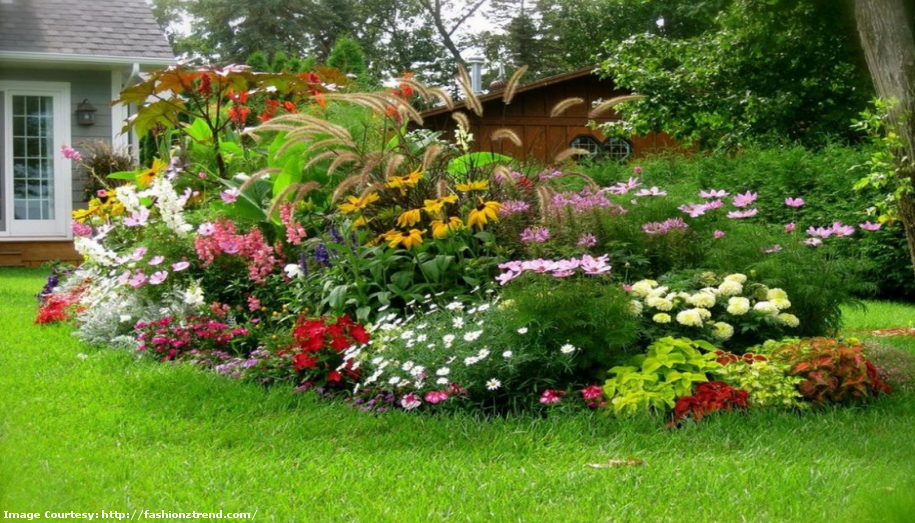Flowers are the essence of a beautiful lawn. These blooming beauties not only make your garden spectacular but also add value to your property. Since flowering plants need more attention all the landscaping companies provide special services for them.
If you still don’t have some, perhaps it’s time you should think of trying out some. Flowers also make an inviting space for birds to visit and share their song.
There’s a large variety to choose from and some precautions to be taken. Here’re a few basics, you need to learn for understanding flowering plants:
- Design your lawn first – It’s good to have a mental picture of your lawn. You can also start with drawing a rough map. This will help you understand what exactly you want your lawn to look like once you have the flower beds in place.
- Shape and size of flowering plant – You can also judge the area available for the the plants you choose. Also, grouping plants of similar height or planting the taller plants behind the shorter ones is a good way of giving your lawn a multi-color and multi-layer look.
- Color of flowers – Always try to plant colors that look vibrant around each other. You can also try the same plant that comes in a variety of colors to give your garden a symmetrical look.
- Ample sunshine – Most of the flowering plants need 6 to 8 hours of sunlight everyday during the growing season. It’s best to analyse such a space in your lawn before bringing in these plants.
- Balanced soil – Most of the flowering plants need balanced soil that’s neither too sandy nor too sticky. You should also test the pH and fertility level of the soil before starting with these plants. Most of the landscaping companies offer this service and also provide testing kits if you’re keen on doing it on your own.
- Manure and fertilizers – Flowering plants require a little more organic matter and better amount of fertilizer in the soil to make flowers so their requirements are a little more as compared to non-flowering plants.
- Selecting the right flowering plant – There are the two main types of flowering plants, annuals and perennials.
- Annual flowering plants have one life cycle, growing in one season. They sprout in their season, grow leaves and roots, produce flowers, create seeds and then die. They bloom abundantly but require more watering and fertilizing.
- While perennials on the other hand are the plants whose root systems stay alive underground for years. They go dormant in winter, but sprout again in spring. They bloom moderately but provide a steady structure for a garden.
- It’s best to have a combination of a few annuals and a few perennials that bloom in different seasons to have an ever flowering garden.
- Insect and disease resistance – Make sure to learn about the common insects and diseases that infest the flowering plant of your choice. Since flowering plants have more colors and fragrance they tend to attract more bugs. It’s recommended to choose the flowers that are naturally resistant and are native to your region.
- Transplanting or seeds – While transplanting your favorite flowers is easier and also offers instant gratification by blooming immediately, there’re a few good ones that only come in the form of seeds. Moreover, sometimes when transplanted, the plant doesn’t trive well and dies in a few days or weeks. On the other hand, growing from seeds is a slower task and needs more dedication and care. Hence, it’s suggested to visit a lawn care company and get the right information before starting with the planting process.
Flowering plants may seem to be a more tedious task with all the attention and care they need but you can’t deny the fact that they bring colors and liveliness to your surroundings. Also, if you plan the planting process, read labels, seed packets and catalog descriptions carefully while buying plants and take proper guidance and services from good landscaping companies, you can have a blooming garden, all year long.
Contact Us today to get your brand new flower bed or garden designed and planned.
Our land care services include lawn care, power washing, mosquito spraying, mini excavator work, fertilization and weed control, sprinkler system programming and repair, shrub and hedge trimming, and landscape maintenance.


